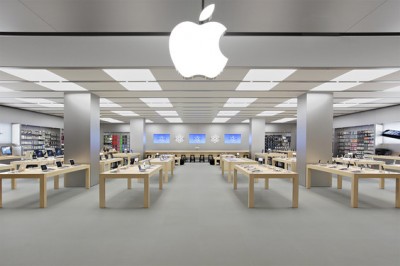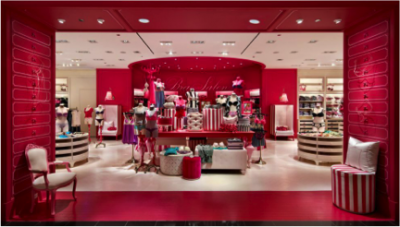The retail shopping experience is paramount to the overall retail customer experience. It is a critical owned asset that requires much more care, attention and thought than most CEO’s or business leaders’ give it.
Too often are product displays delegated to merchants and store associates trained by Operations. Marketing teams spend more time on communications aimed at driving traffic to the store instead of worrying about what happens in the store once customers arrive. When done correctly, the store experience personifies the brand and significantly improves conversion – one of the most powerful ways to build a brand is direct experience. The store becomes a tangible manifestation of the brand value proposition that customers can relate to in meaningful ways.
We love rehabilitating retail spaces. We know that building purposeful touch points for people is so much more impactful than most advertisements could ever dream of being.
When rethinking your in-store experience, always consider the user first.
When rethinking your in-store experience, always considers the user first. It’s not about designing aesthetically pleasing elements for the sake of their beauty, or incorporating lux materials as a means to impress. A memorable retail experience is really about how all elements – including signage, sales associates, and product merchandise displays – work collectively to inspire, motivate and benefit the end user.
Keeping Up With the E-Jones
The traditional retail store, as an institution, was destined for either failure or radical reinvention once e-commerce entered mainstream consumer culture. Given today’s hyper-competitive, overly commoditized retail landscape, brick-and-mortar locations can no longer exist simply as transactional sites. That being said, if given the attention it deserves, the physical store is an asset that pure play dotcoms struggle to compete with. Stores can be leveraged in smart and creative ways to help patrons better navigate products, inspire them to consider cross sell and/or upsell opportunities, and be directed toward higher-margin items or private label brands.
Retail locations aren’t just stores – they’re statements. Brick-and-mortars allow brands to build meaningful relationships with customers.
More Than Just a Store
 If done well, retail locations aren’t just stores – they’re statements. Brick-and-mortars must be curators of knowledge in regard to their products and establish customer relationships. Customer service isn’t simply a buzzword, it is a powerful tool in building loyalty and brand advocates. Like religious temples, really good stores create an all-encompassing experience for people to congregate and feel better about themselves, while enjoying a temporary break from the realities of everyday life.
If done well, retail locations aren’t just stores – they’re statements. Brick-and-mortars must be curators of knowledge in regard to their products and establish customer relationships. Customer service isn’t simply a buzzword, it is a powerful tool in building loyalty and brand advocates. Like religious temples, really good stores create an all-encompassing experience for people to congregate and feel better about themselves, while enjoying a temporary break from the realities of everyday life.
Of course, a great design scheme and sharp lighting are important factors for drawing customers in, but there is so much more to explore when in comes to maximizing the retail experience that has nothing to do with traditional design elements.
There is so much more to explore when in comes to maximizing the retail experience that has nothing to do with traditional design elements.
According to Brand Channel, “Many retailers are beginning to realize that rather than close stores, they can sustain them by giving them a much-needed facelift. More than a surface makeover, however, reinventing the store involves a thorough rework that often includes a growing trend: creating a ‘brand story’ to engage and involve a consumer in the shopping experience.”
The in-store experience should focus on three primary areas:
1) Sales Associates
Are employees properly trained and motivated? Is their service strategically aligned with the desired customer experience?
2) Flow
Is the store easy to navigate, does it contain suitable signage, and is it laid-out in the optimal manner to improve the experience and maximize profits?
3) Surprise & Delight
What do you offer in-store that makes shopping there a treat? Sampling, gifts with purchase, superior customer service, even pictures with Santa, all are ways to make customers want to visit again and again.
Retail Superstars
Many brick-and-mortar stores are in distress and on the brink of shuttering their doors in the wake of the convenience and selection that online shopping offers; however, the following examples provide a few bright spots in an all-too-bleak retail landscape.
Victoria’s Secret
While it originated as a mail order catalogue, it was their stores that made Victoria’s Secret a household name. Through their retail locations, combined with other integrated marketing touch points, like their annual fashion show, the brand has blossomed into the epitome of sex appeal. Its stores, from their provocative yet fun signage, huge displays of sexy jewellery, perfume and other non-clothing accessories and educated sales staff, are a living testament to the brand persona.
Rocky Mountain Soap Company
Headquartered in the outdoorsy community of Canmore, Alberta, this brand eschews the use of unnatural ingredients in their lotions and potions and builds its stores with the same emphasis on green materials and environmental sensitivity. Rocky Mountain’s associates are trained to give on-site demonstrations and samples of products, so visits to the store feel more like a mini day spa retreat than a retail location.
Mark’s
In an effort to demonstrate the thermal capabilities of its cold weather gear, Mark’s provides below zero freezers for customers to walk into and experience the warmth of their products first-hand. Mark’s idea is quirky and original and patrons respect Mark’s commitment to their products – they put their money where their mouth is, no doubt about it.
 Sport Chek
Sport Chek
To demonstrate its innovative high-performance athletic wear, Sport Chek replaced traditional signage with interactive, digital screens that provide on-demand information about specific merchandise and allow visitors to explore the company’s products at a much deeper level than ever before. Sport Chek also goes out of its way to hire real athletes who can speak intelligently to the benefits of apparel and footwear, and the stores’ new look and smart use of technology established a stronger emotional connection between customers and the brand. Just try and find that kind of integrative experience at your average big-box retailer.
The Home Depot
This store doesn’t just sell products, it sells know-how. Home Depot’s Saturday morning how-to classes provide demonstrations and information designed to empower customers to tackle more home improvement projects themselves – and ultimately to sell more product to these customers as a result.
All of these brands have one thing in common, they know the power of direct experience and aren’t afraid to immerse their customers in the brand and what it stands for. They go the extra mile to ensure that their physical stores aren’t simply a stop along the way, but are rather touch points that customers derive significant value from, value that can’t be found online.
Be The Brand
The retail store is the physical representation of your brand’s identity. It is one of your most important owned assets and should deliver a memorable experience to patrons; an experience that will surprise, delight, and ultimately encourage customers to revisit and repurchase, again and again.
Cult Collective helps brands create extraordinary retail spaces that deliver noteworthy experiences to customers. Reimagining brick-and-mortar locations is among the most exciting work we do, and can be the crown jewel of the retail marketing playbook.
The design of your retail space is a powerful tool, know how to maximize it.


